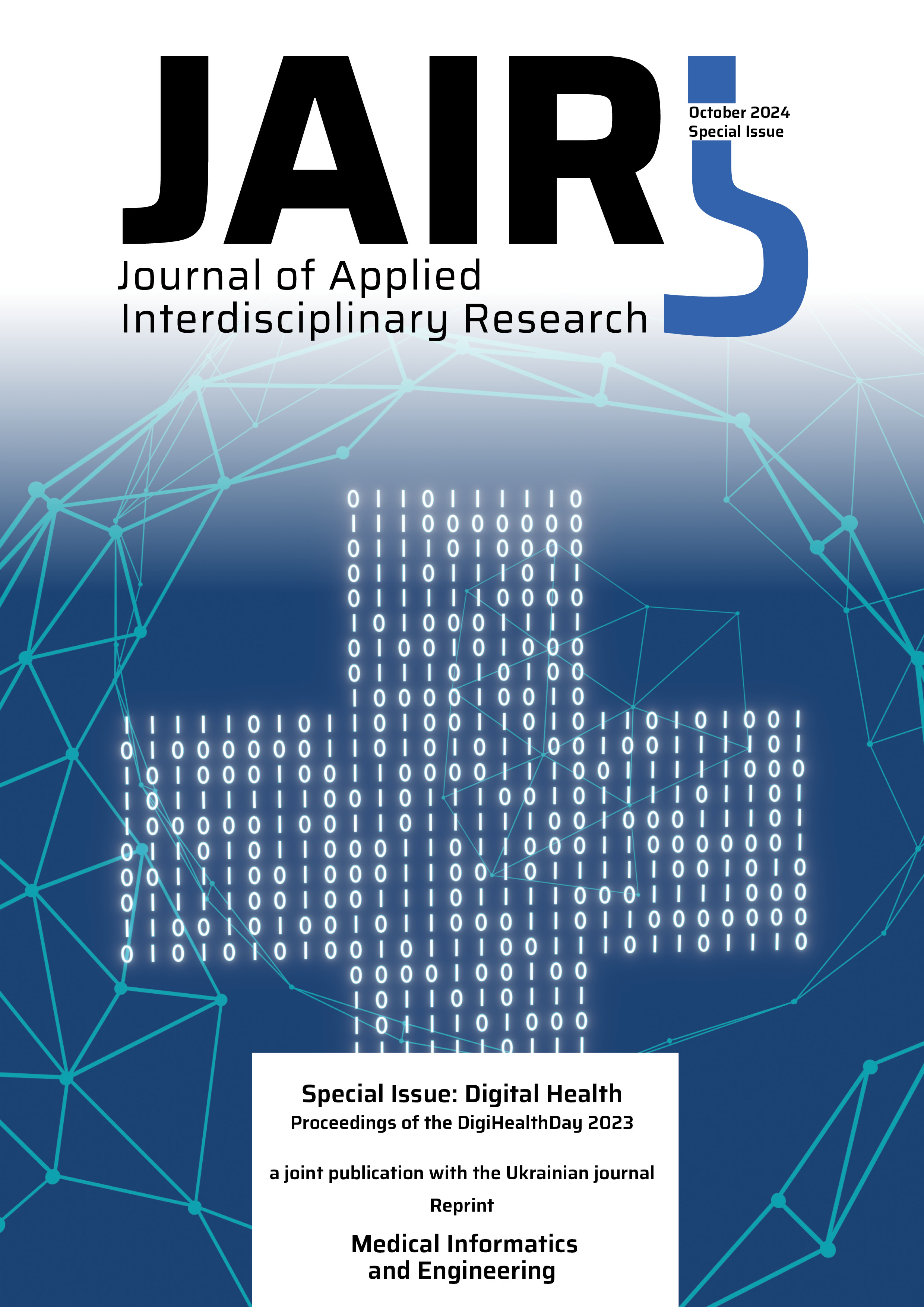DigiHealth-AI: Outcomes of the First Blended Intensive Programme (BIP) on AI for Health – a Cross-Disciplinary Multi-Institutional Short Teaching Course
Main Article Content
Keywords
machine learning, healthcare, pedagogy
Abstract
We reflect on the experiences in organizing and implementing a high-quality Blended Intensive Programme (BIP) as a joint international event. A BIP is a short programme that combines physical mobility with a virtual part. The 6-day event, titled “DigiHealth-AI: Practice, Research, Ethics, and Regulation”, was organized in collaboration with partners from five European nations and support from the EU’s ERASMUS+ programme in November 2023. We introduced a new learning method called ProCoT, involving large language models (LLMs), for preventing cheating by students in writing. We designed an online survey of key questions, which was conducted at the beginning and the end of the BIP. The highlights of the survey are as follows: By the end of the BIP, 84% of the respondents agreed that the intended learning outcomes (ILOs) were fulfilled, 100% strongly agreed that artificial intelligence (AI) benefits the healthcare sector, 62% disagree that they are concerned about AI potentially eliminating jobs in the healthcare sector (compared to 57% initially), 60% were concerned about their privacy when using AI, and 56% could identify, at least, two known sources of bias in AI systems (compared to only 43% prior to the BIP). A total of 541 votes were cast by 40 students, who were the respondents. The minimum and maximum numbers of students who answered any particular survey question at a given period are 25 and 40, respectively.
References
2. Perf¨olz R, L´opez-Varela A. Internationalisation of Teaching and Learning through Blended Mobility: Potentials of Joint International Blended Courses and Challenges in Their Implementation. Education Sciences. 2022;12(11):810.
3. Ghentulescu R. Erasmus+ Blended intensive programmes – a personal perspective. Buletinul Științific al Universității Tehnice de Construcții București: Limbi Străine şi Comunicare. 2023;16(1):26–35.
4. Cambria A, Marchisio M, Roman F, Sacchet M, Spinello E. Blended intensive programs for fostering collaboration and knowledge exchange in security and defence education. In: ICERI2023 Proceedings:9441–9448. IATED 2023.
5. Al-azzawi SS, Kov´acs G, Mokayed H, Chroneer D, Simistira F, Liwicki M. Innovative Education Ap- proach Toward Active Distance Education: a Case Study in the Intro- duction to AI course. In: Conference Proceedings. The Future of Education 2022, 2022.
6. Gruba P, Hinkelman D, C´ardenas-Claros MS. New technologies, blended learning and the ‘flipped classroom’in ELT. The Routledge Handbook of English Language Teaching. 2016:135–149.
7. Hamilton C, Paek L. From blended to e-learning: Evaluating our teaching strategies. ASp. La Revue du GERAS. 2020(78):47–64.
8. Padilla Rodriguez BC, Armellini A. Cases on active blended learning in higher education. IGI Global 2021.
9. Kaur M. Blended learning ‒ its challenges and future. Procedia ‒ Social and Behavioral Sciences. 2013;93:612–617.
10. Dangwal KL, Lata K. Blended learning: An innovative approach. Universal Journal of Educational Research. 2017;5(1):129–136.
11. Theobald EJ, Hill MJ, Tran E, Freeman S. Active learning narrows achievement gaps for underrepresented students in undergraduate science, technology, engineering, and math. Proceedings of the National Academy of Sciences. 2020;117(12):6476–6483.
12. Freeman S, Eddy SL, McDonough M,Wenderoth MP. Active learning increases student performance in science, engineering, and mathematics. Proceedings of the National Academy of Sciences. 2014;111(23):8410–8415.
13. Armbruster P, Patel M, Johnson E, Weiss M. Active learning and student-centered pedagogy improve student attitudes and performance in introductory biology. CBE—Life Sciences Education. 2009;8(3):203– 213.
14. Chi MT, Wylie R. The ICAP framework: Linking cognitive engagement to active learning outcomes. Educational Psychologist. 2014;49(4):219– 243.
15. Biggs J. Enhancing teaching through constructive alignment. Higher Education. 1996;32(3):347–364.
16. Brown T, Mann B, Ryder N, et al. Language models are few-shot learn- ers. Advances in Neural Information Processing Systems. 2020;33:1877–1901.
17. Liu H, Li C, Wu Q, Lee YJ. Visual instruction tuning. arXiv Preprint arXiv:2304.08485. 2023.
18. European Commission. Blended mobility implementation guide for Erasmus+ higher education mobility KA131. 2022.
19. Adewumi T, Alkhaled L, Buck C, et al. ProCoT: Stimulating Critical Thinking and Writing of Students through Engagement with Large Lan- guage Models (LLMs). 2023.
20. Zimmerman BJ. Theories of self-regulated learning and academic achievement: An overview and analysis. Self-Regulated Learning and Academic Achievement. 2013:1–36.
21. Touvron H, Martin L, Stone K, et al. Llama 2: Open foundation and fine-tuned chat models. arXiv preprint arXiv:2307.09288. 2023.
22. Adewumi T, Adeyemi M, Anuoluwapo A, et al. AfriWOZ: Corpus for Exploiting Cross-Lingual Transfer for Dialogue Generation in Low- Resource, African Languages. in 2023 International Joint Conference on Neural Networks (IJCNN):1‒8 2023.


